‘Every simple action involves crossing a checkpoint, sometimes several of them; every such crossing involves a lengthy, degrading inspection, with the soldiers deciding whom to check, at what pace, and whom to allow through.’
Israeli human rights organisation, B’Tselem
A view over Hebron
Hebron, the second largest city in the West Bank, is the only Palestinian city with Israeli settlers living at its’ heart. Under the terms of the Hebron Agreement (1997) Hebron city was divided into two areas H1 (a modern Palestinian city) and H2, the area that encompasses the Old City and a growing number of Jewish Israeli settlements. H2 is under Israeli military control and subject to Israel’s policy of ‘separation’, designed to keep the Palestinians and Jewish Israeli settlers apart and provide a protective space around the settlements. The checkpoints provide a means for this policy to be implemented.
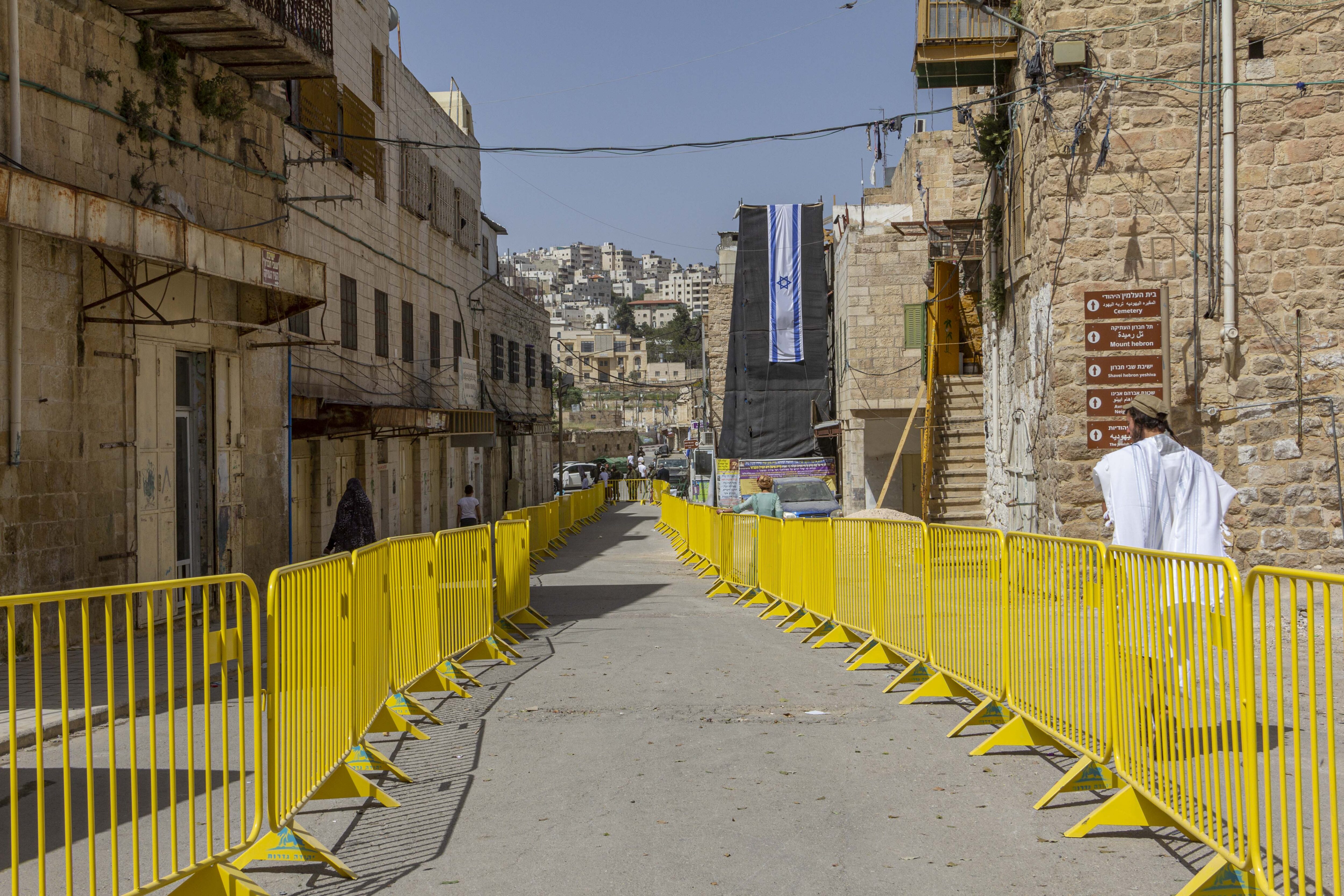
Separation of Palestinians and Jewish Israelis – Palestinians must walk on the left and Jewish Israelis on the right
‘Israel has been openly pursuing a policy of segregation in the center of Hebron, in order to allow a handful of Jewish residents to live as though they had not settled in the middle of a bustling Palestinian city.’
Israeli human rights organisation, B’Tselem
Palestinians make up the majority of the population in H2; about 34,000. There are around 700-800 settlers. According to Breaking the Silence, a human rights organisation set up by Israeli veterans, 650-900 Israeli soldiers are also present to provide the settlers with military protection.
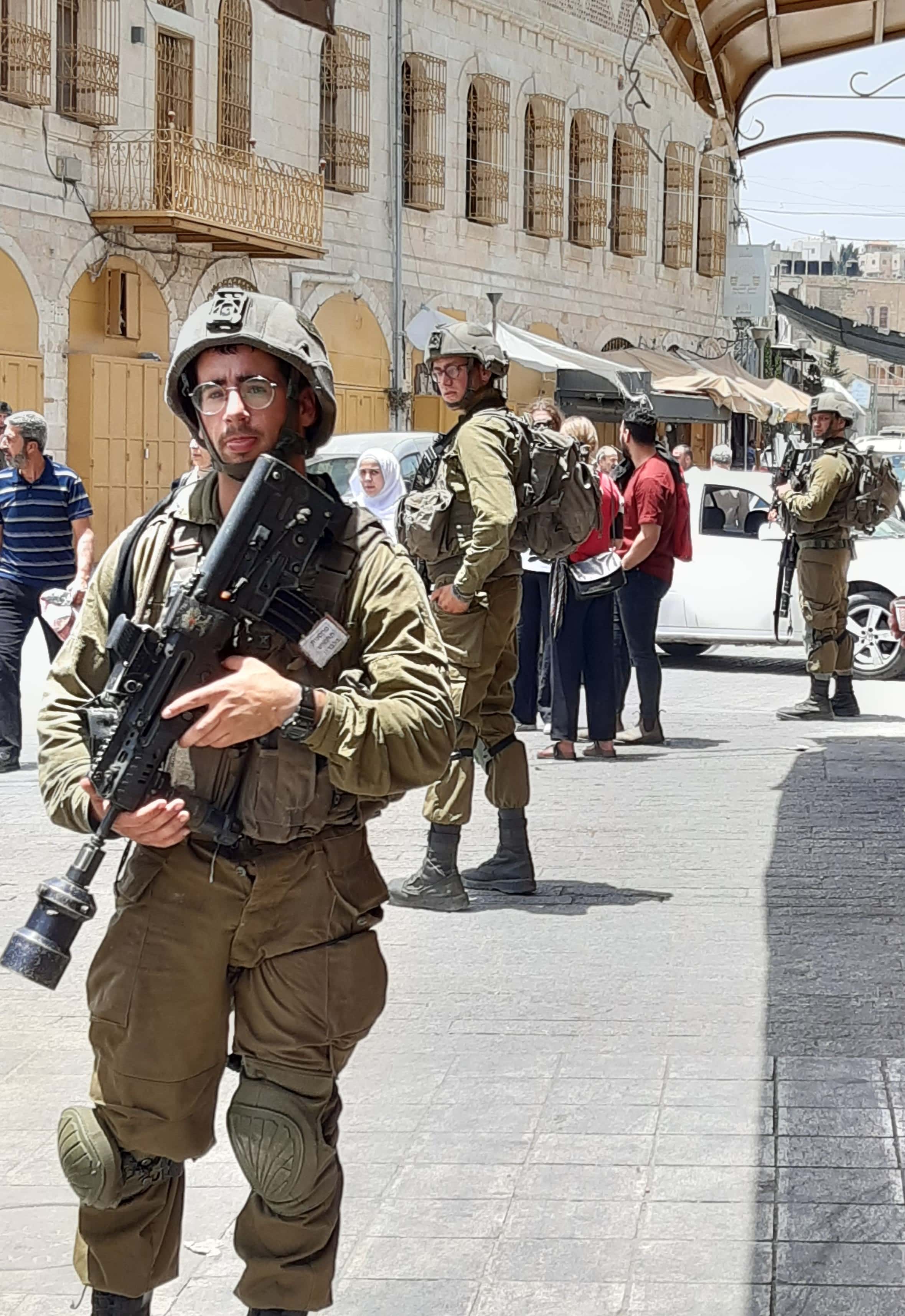
Soldiers in H2
‘Soldiers are to be found on every street corner wherever there are Israeli settlements. Nevertheless, they rarely intervene when settlers attack Palestinians.’
Israeli human rights organisation, B’Tselem
A key aspect of the role of Israeli soldiers is staffing the checkpoints. B’Tselem, an Israeli human rights organisation, has identified 22 checkpoints and 64 physical barriers of various types in Hebron. The checkpoints control and monitor the movement of Palestinians.
Within H2, Jewish residents have free movement, whilst strict access controls apply for Palestinians. In the streets close to the settlements, Palestinian vehicles are not permitted.
Some of the checkpoints have towers, turnstiles, revolving doors and metal detectors. Palestinians crossing the checkpoints may be photographed and cameras for facial recognition may be in situ.
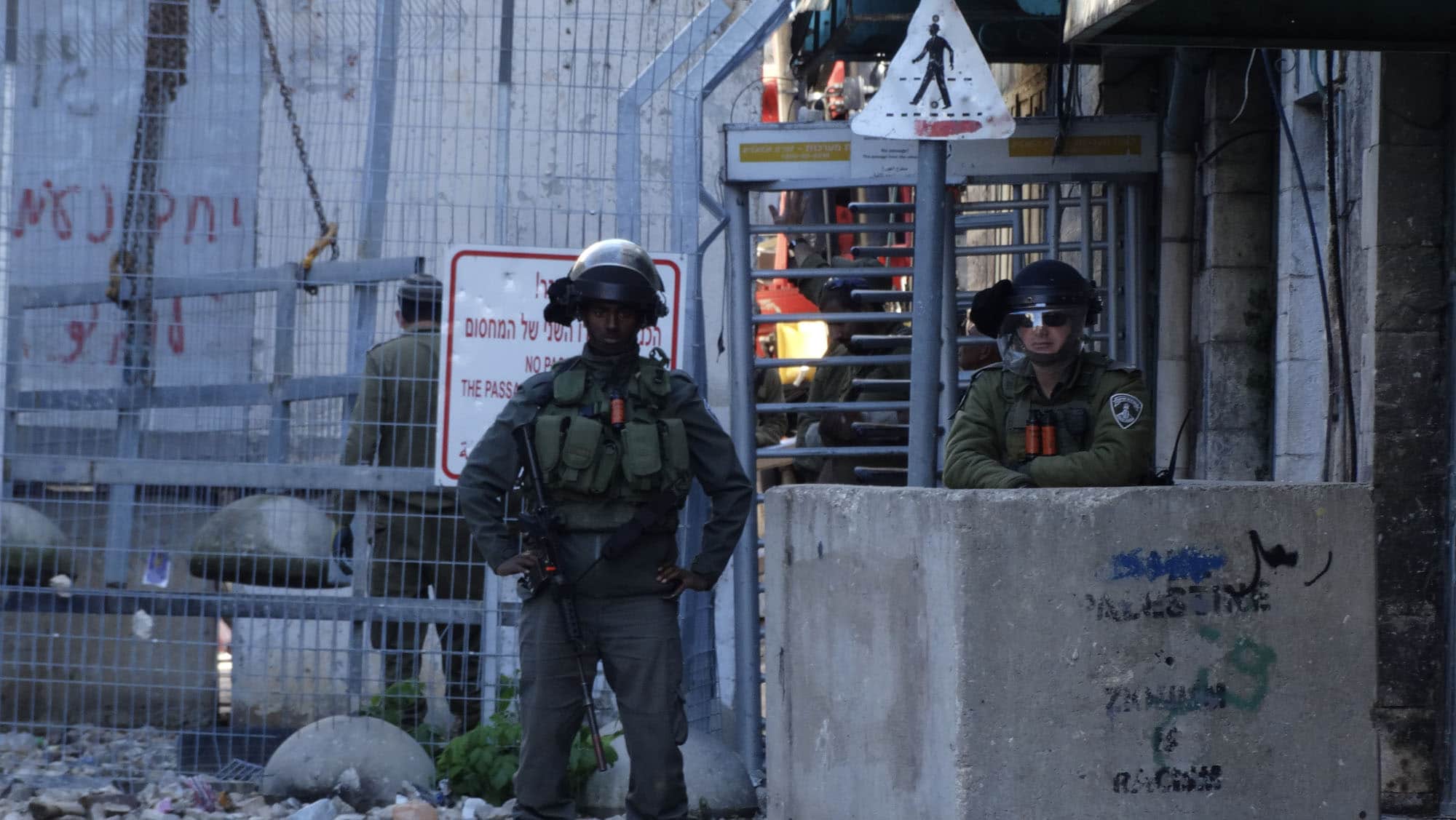
Soldiers guarding checkpoint in central Hebron
In order to cross the checkpoints Palestinians need identity cards. If they want to cross a border checkpoint to pass into Israel, where many work, they also require a permit issued by the Israeli authorities. Permission to cross a checkpoint may be denied at any time. Palestinians are frequently required to endure humiliating inspections.
A testimony from a soldier given to Israeli human rights organisation, Breaking the Silence;
‘We delayed a woman for three hours at a checkpoint until she agreed to lift her blouse and be checked… Guys take her off to the side and say, “Lift your blouse, if you want to get through.” They sat there for three hours. Finally she gave up and said, okay.’
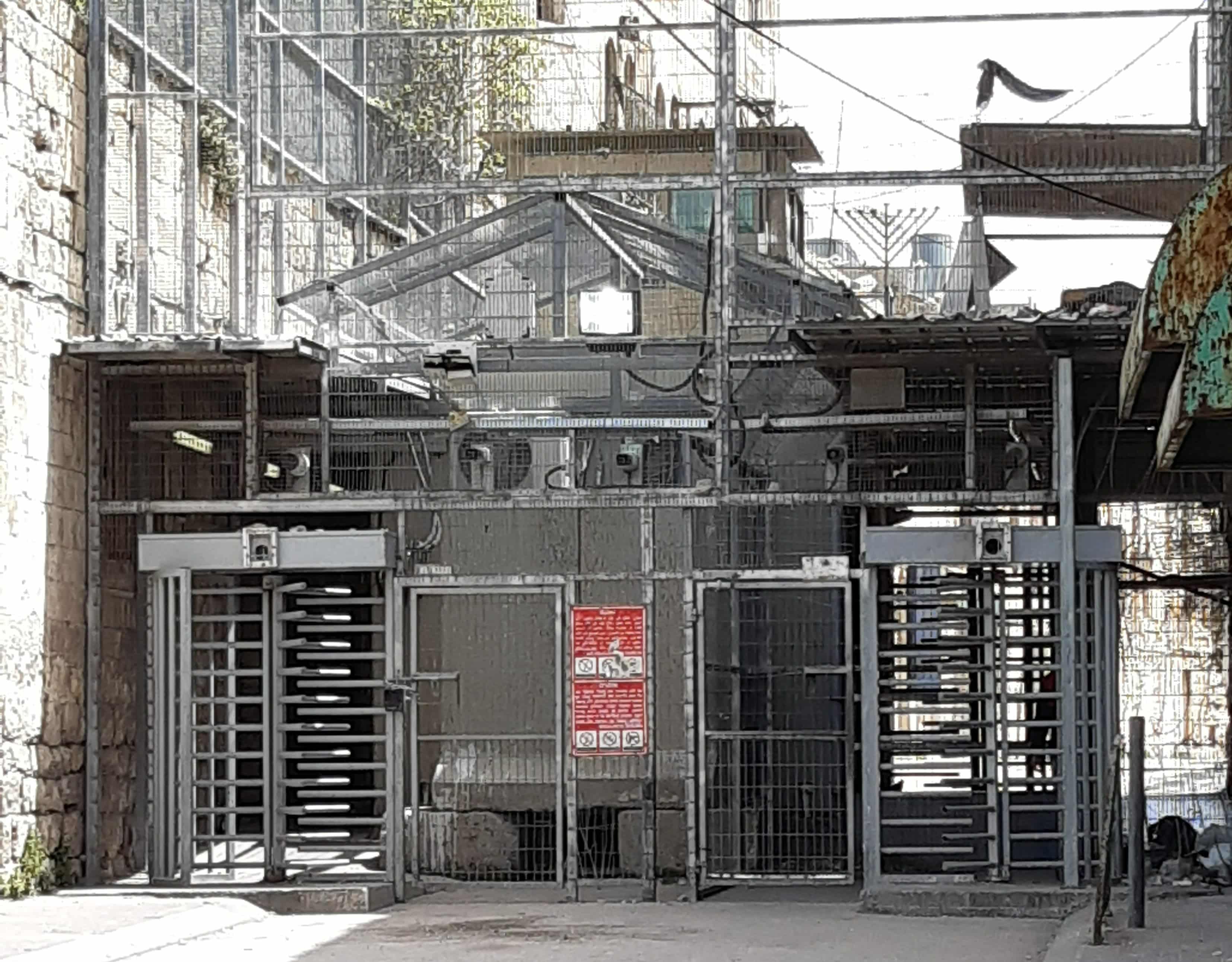
Checkpoint 56
Checkpoint 56 controls access to the main road that links the settlements. It is permanently staffed by the Israeli military. About 100 yards beyond the checkpoint (into H1) are concrete blocks which enable the Israeli military to take control of the area in front of the checkpoint.
The military presence at checkpoints and the coercive practices employed can cause friction between Palestinians and the security forces which may result in violent clashes. Palestinian teenagers may throw stones at the checkpoint. Sometimes tyres are burned. The Israeli military often respond by firing tear gas and sound grenades. Checkpoints are then likely be closed for a period, denying people access to, for example, school, work, shops.
In September 2022 new technology was introduced at checkpoint 56. It is an artificial intelligence controlled ‘remote control crowd dispersal system’ that can fire stun grenades, tear gas and sponge-tipped bullets. These bullets can cause serious injury.
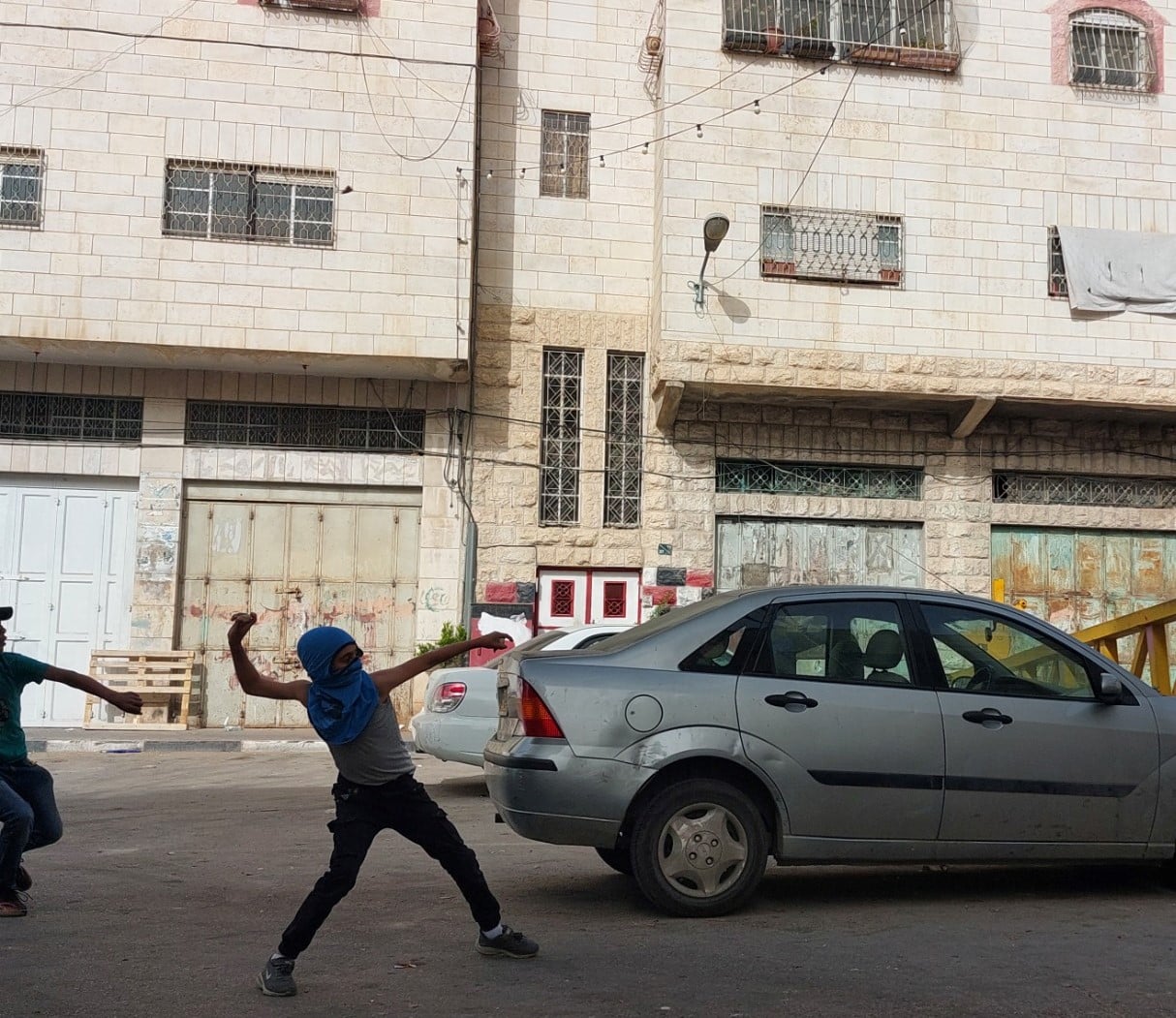
Young person throwing stones at Abu Rish checkpoint
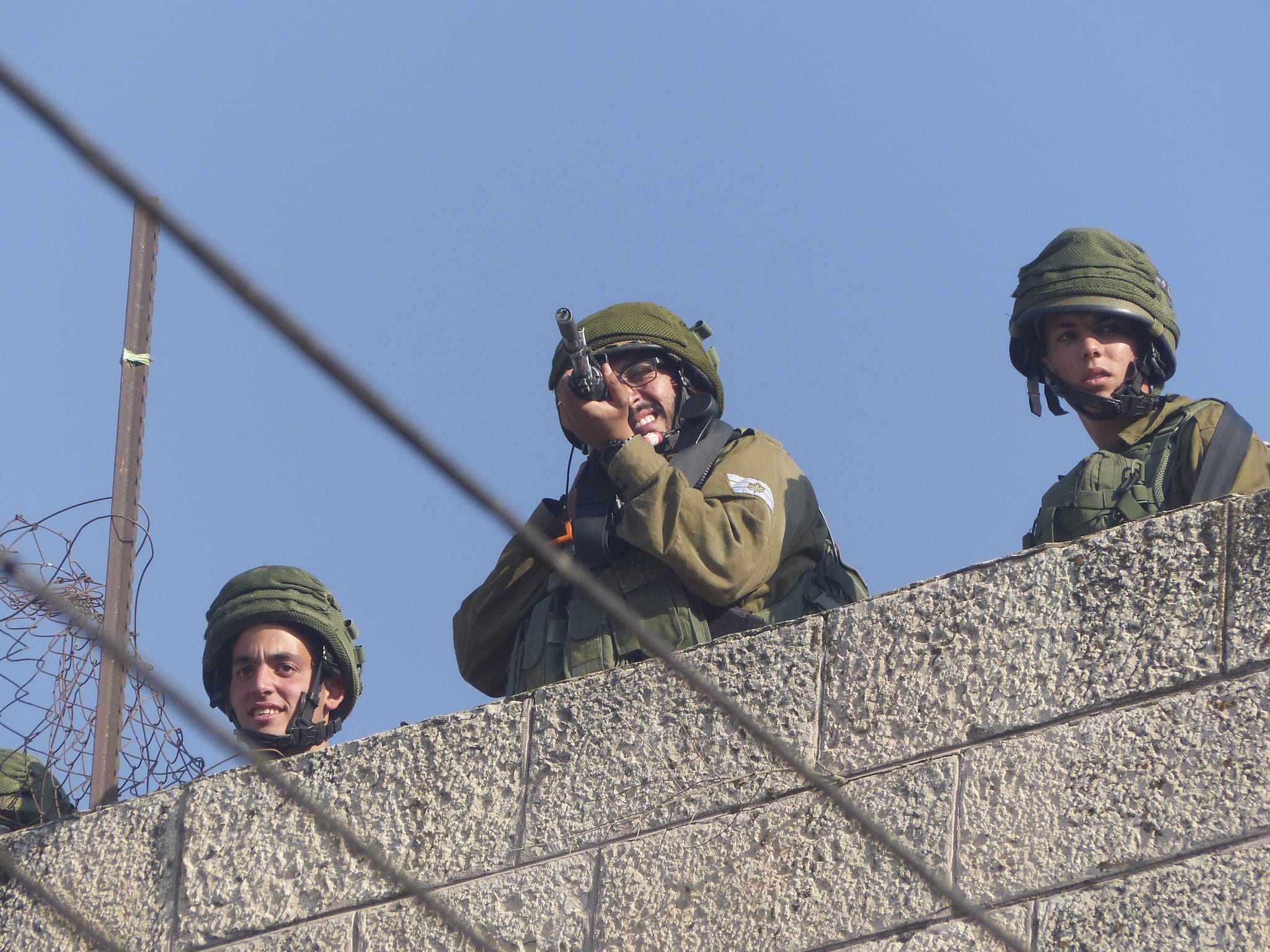
Israeli soldiers monitoring clashes in Hebron
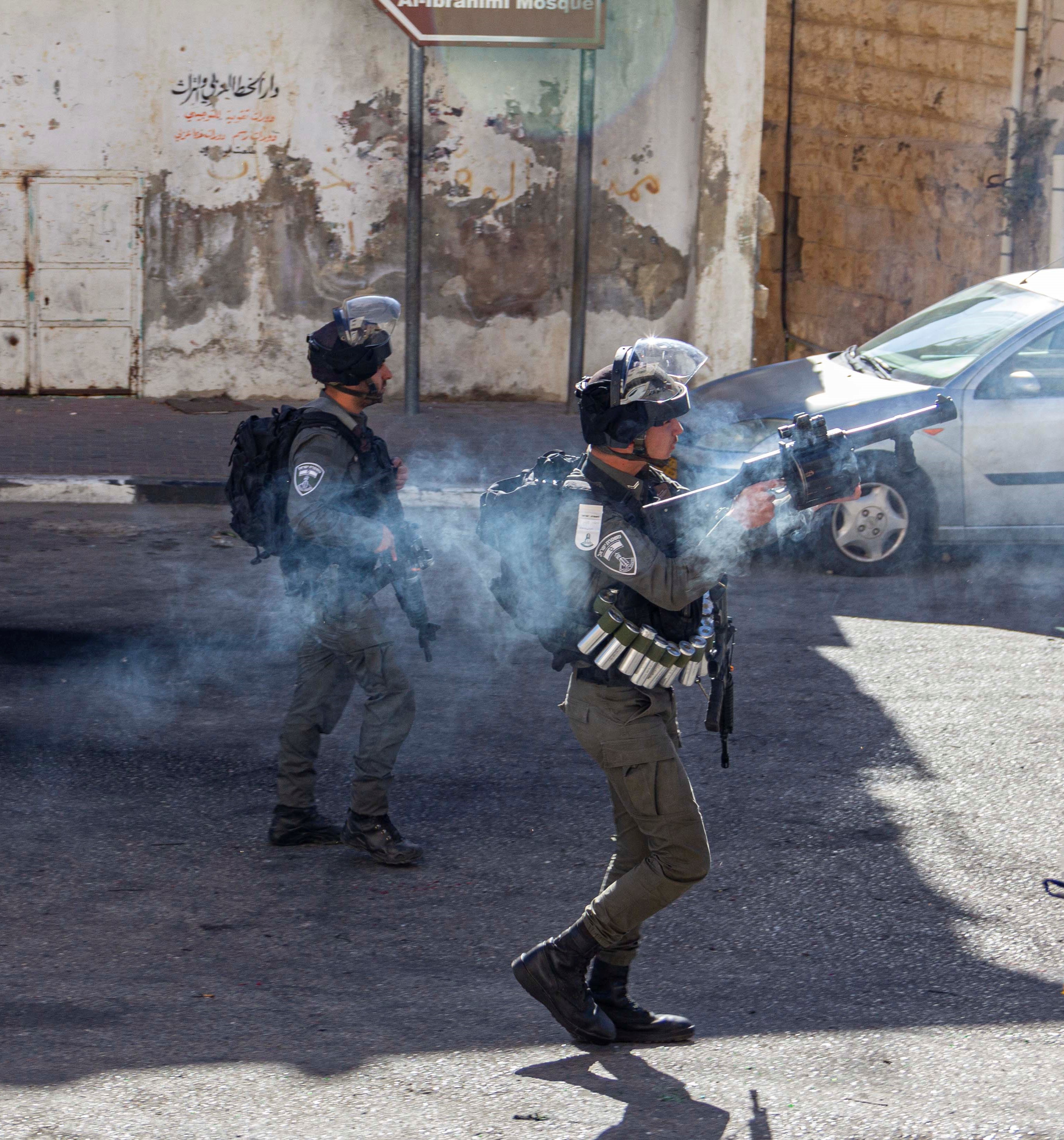
Israeli military firing tear gas near Abu Rish checkpoint
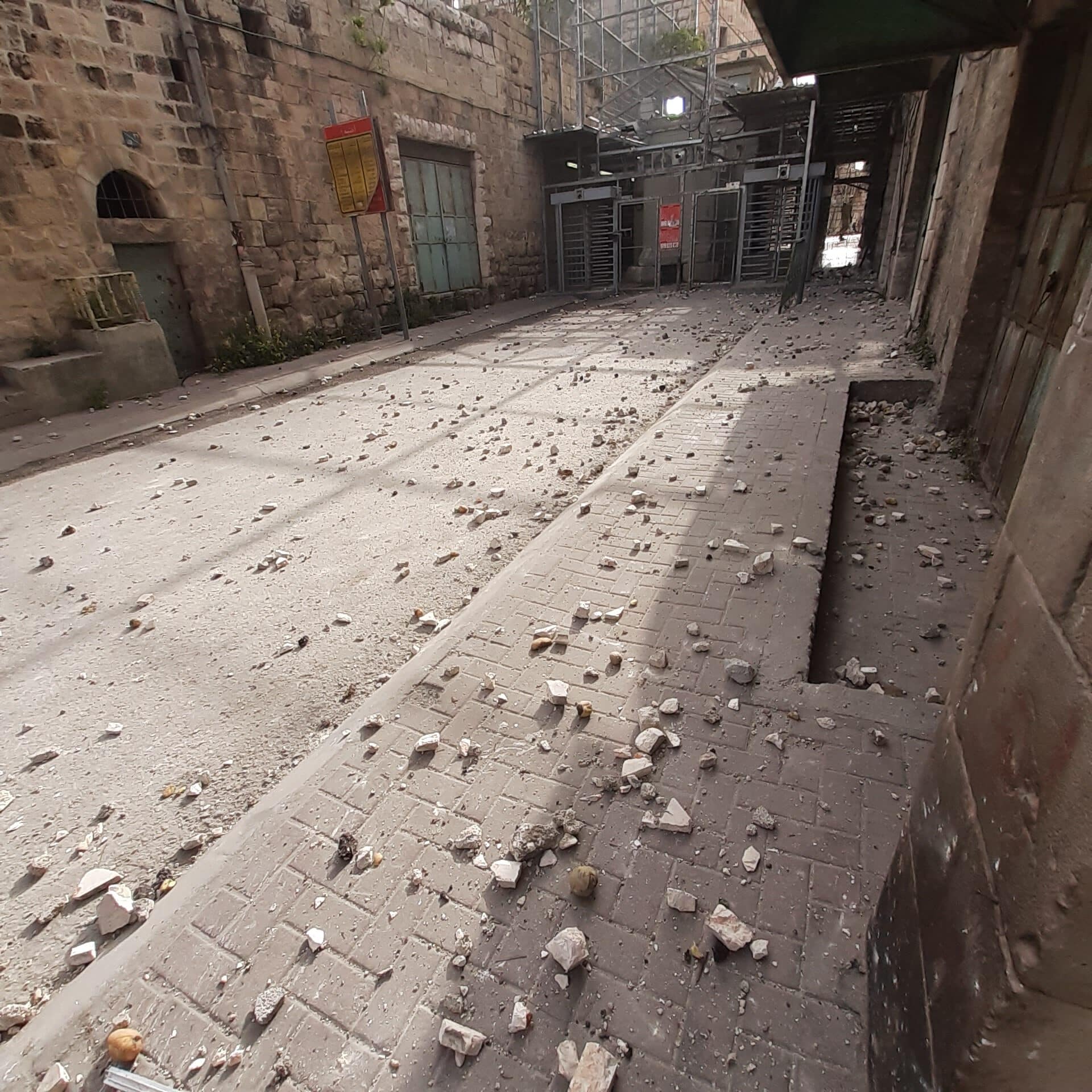
Checkpoint 56 aftermath of clash
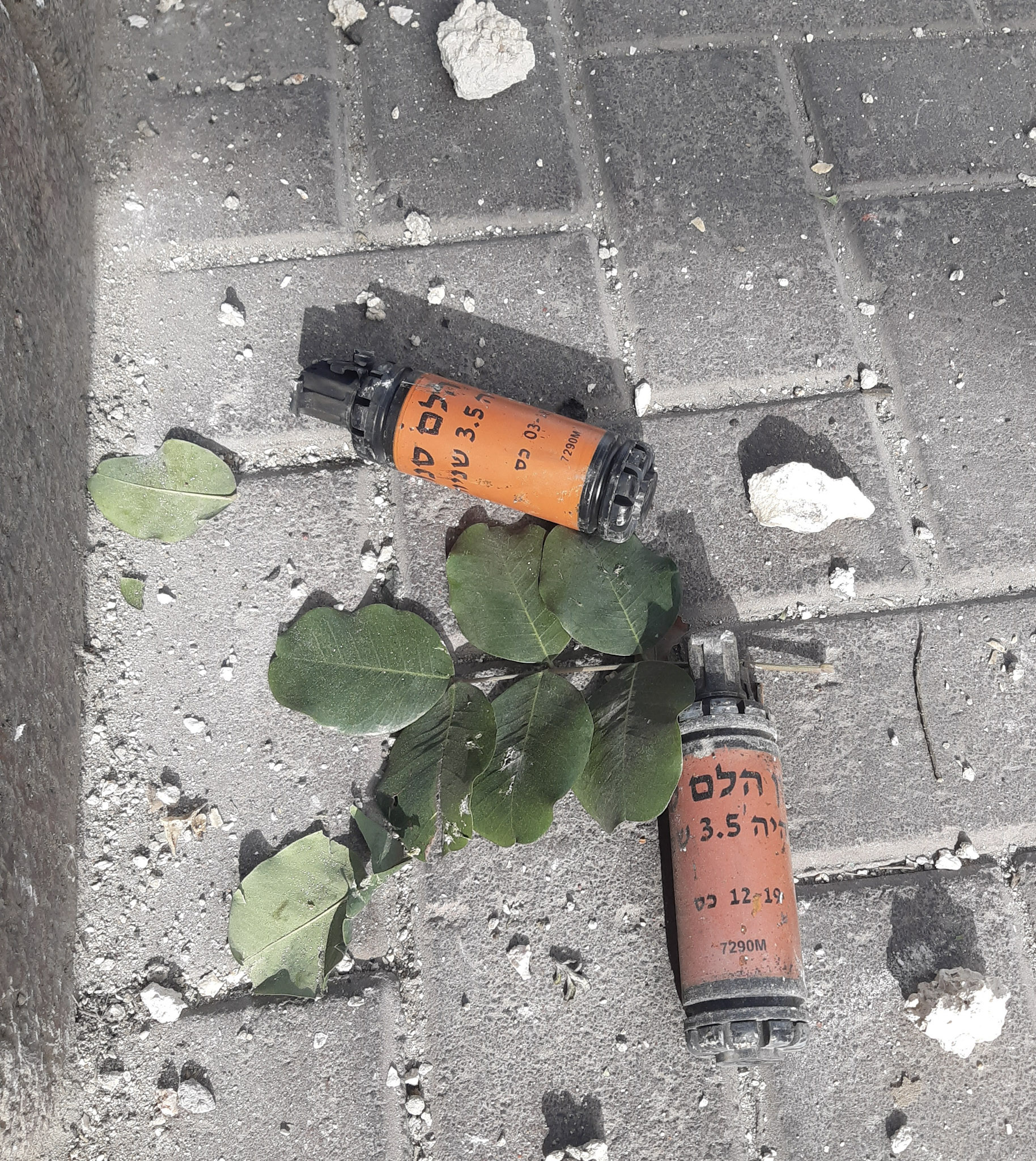
Tear gas canisters at Checkpoint 56
Access to education
UNOCHA (United Nations Office for Coordination of Humanitarian Affairs) estimates that about 2200 children living in H2 have to cross checkpoints to get to school. Most families (90%) report that their children have faced at least one incident of delay, physical search, harassment or detention on their way to school in the last six months. Children may be required to open their school bags for these to be searched.
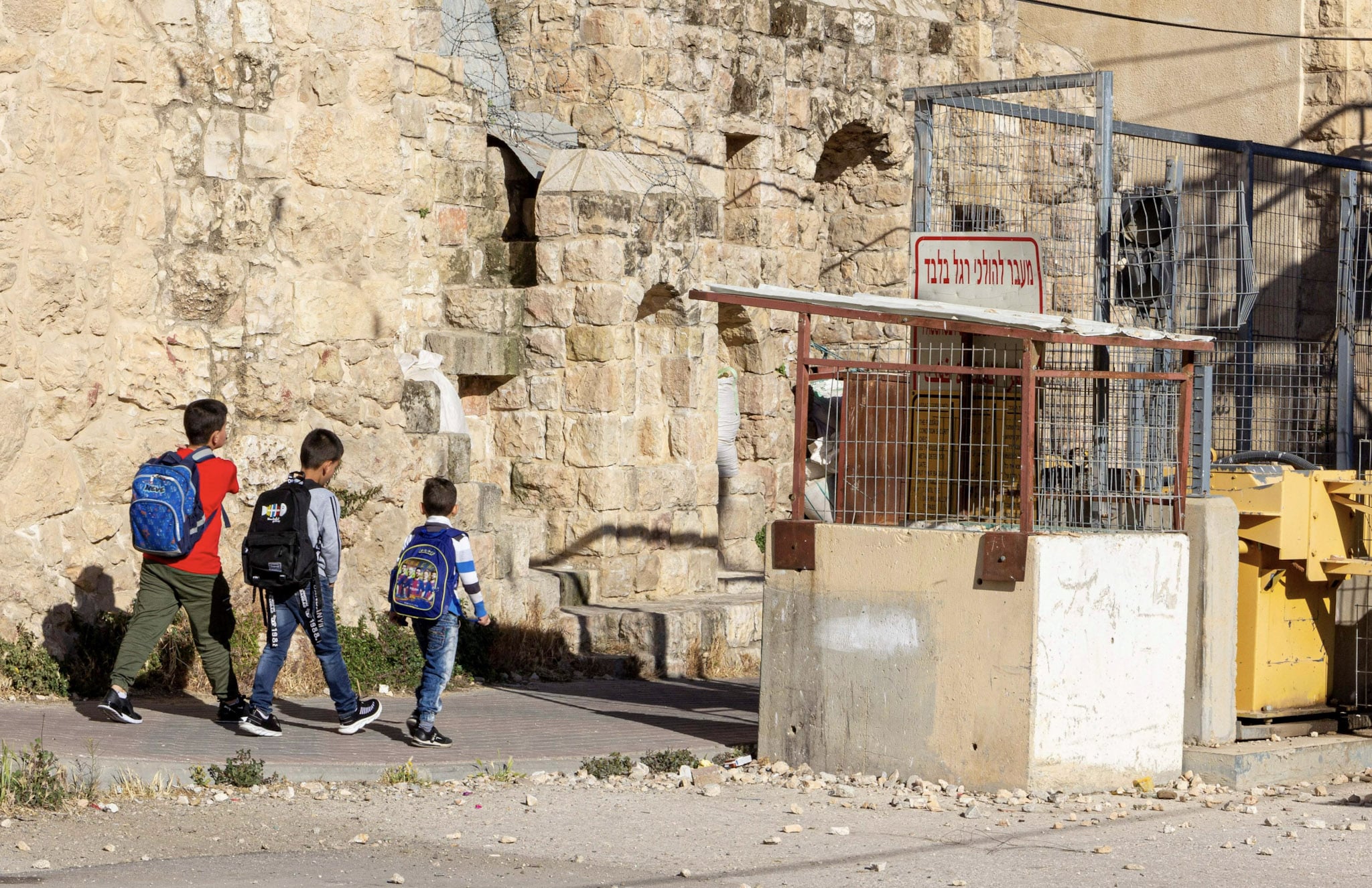
Palestinian school children crossing checkpoint in Hebron
Palestinian school children crossing checkpoint in Hebron
Access to worship
The Ibrahimi mosque (Palestinian name) or Cave of the Patriachs (Jewish name) is the burial place of Abraham, Isaac, Jacob and Sarah and a holy site for Muslims and Jews. Following the Goldstein massacre, when an American Jewish extremist killed 29 Muslims in the mosque, the worship space was divided into two: Muslims have access to one part and Jews, the other. While Jews can freely access their entrance to the building, Muslims need to pass through a checkpoint and a further dedicated secure entrance to the mosque compound. To pass through the checkpoint Palestinians may be asked for their identity cards and searched (person and property).
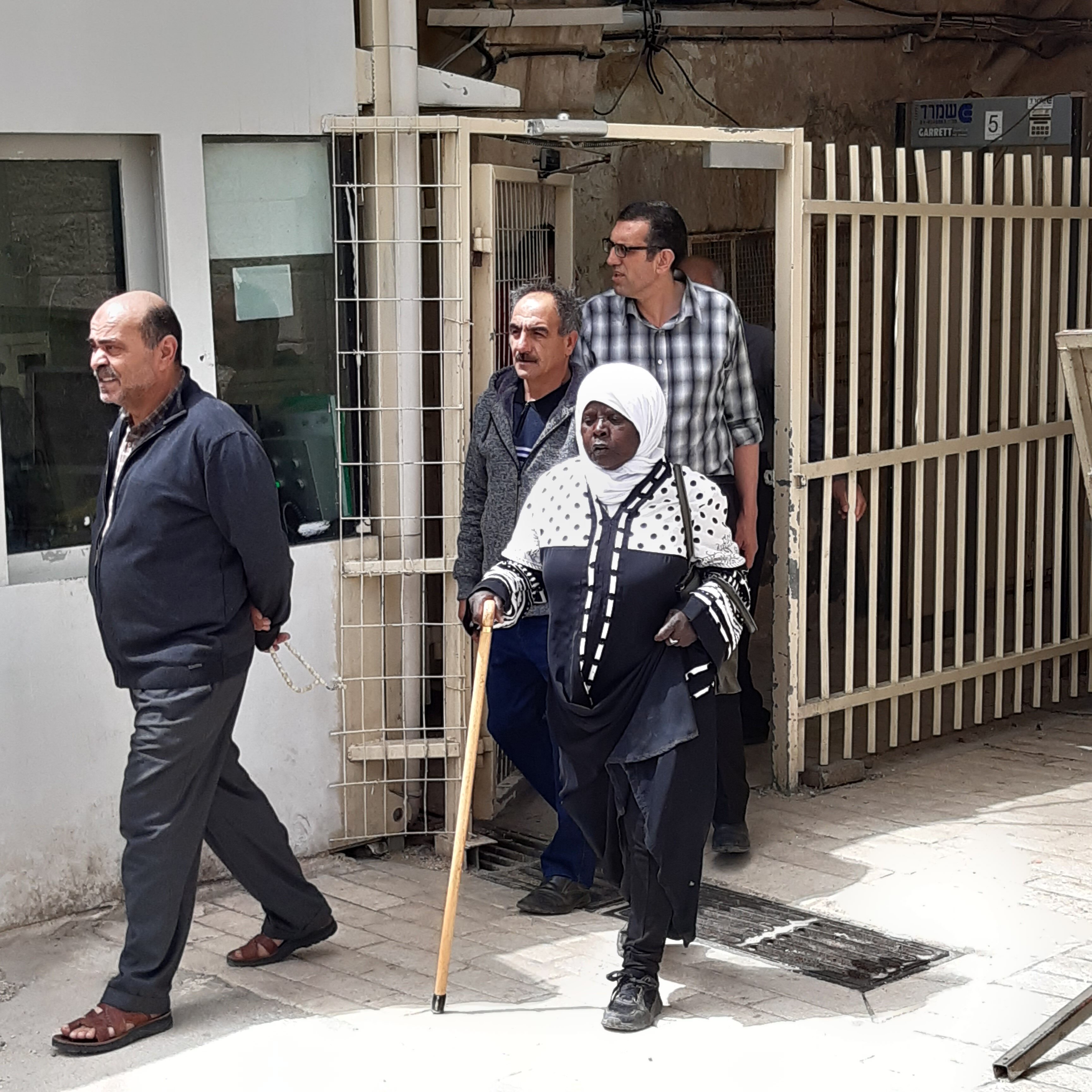
Worshippers passing through the checkpoint to the mosque
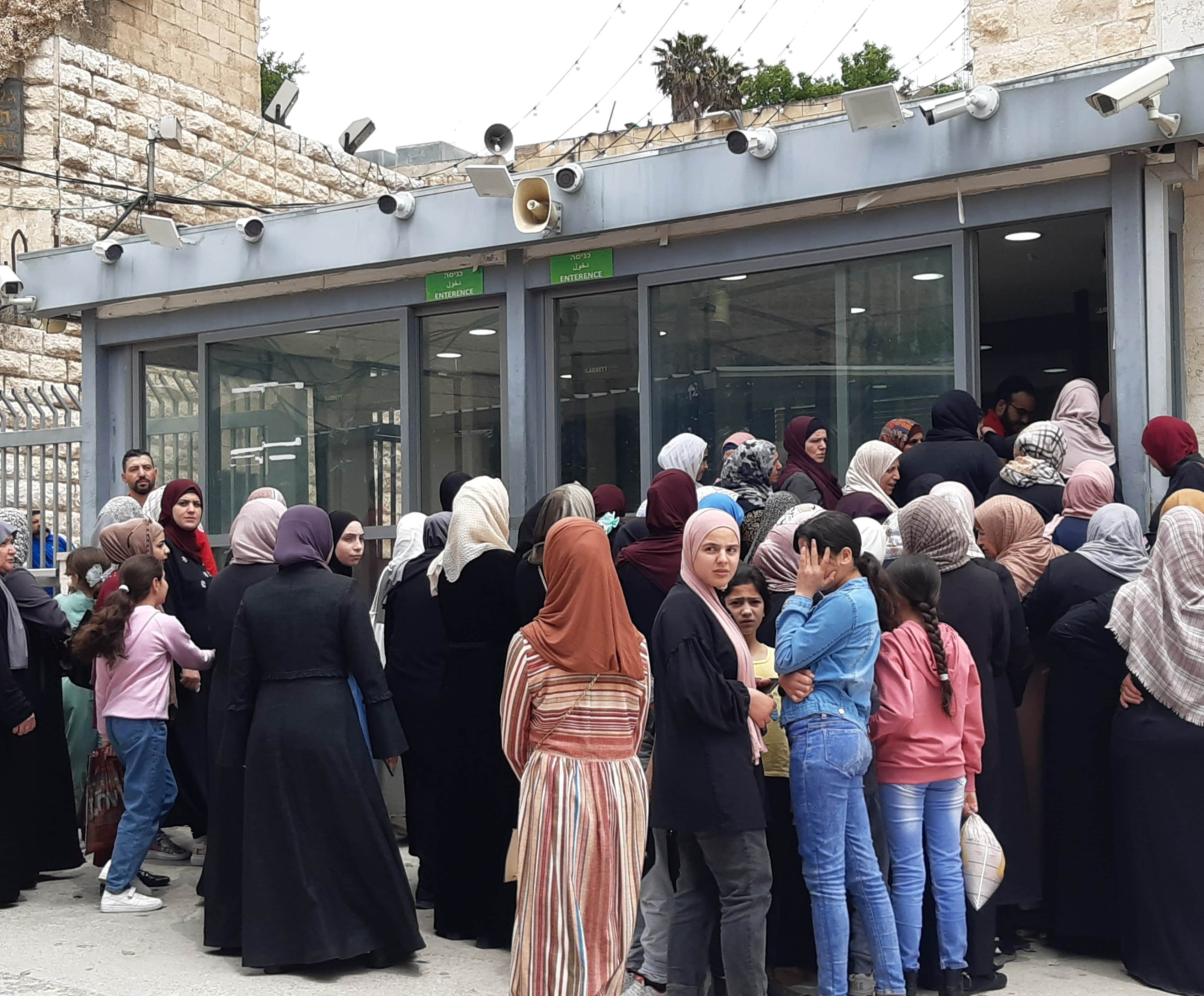
Further dedicated secure entrance to the mosque compound
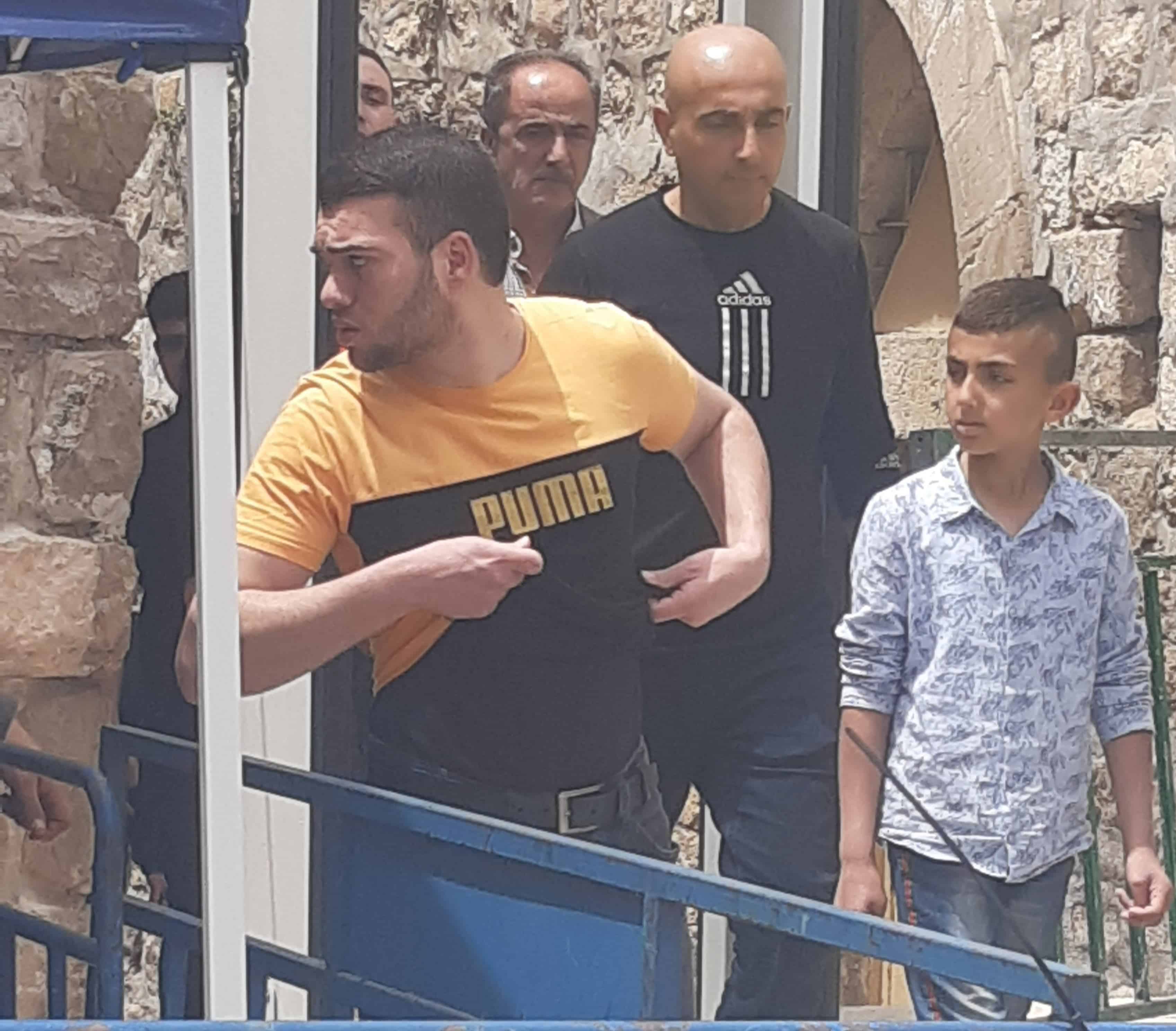
Palestinian worshipper asked to lift t-shirt by soldiers as he passes through the checkpoint to mosque
On Jewish festivals routes to holy sites are protected to facilitate access. During Passover in 2022 Jewish settlers wanted to visit a holy burial cave. Although located in H1 (ostensibly under Palestinian security control) the Israeli military sealed off the area between checkpoint 56 and the cave to enable the settlers to walk to it. Military personnel were located in the area outside checkpoint 56 and on the adjacent rooftops. Military vehicles blocked the roads and diverted traffic.
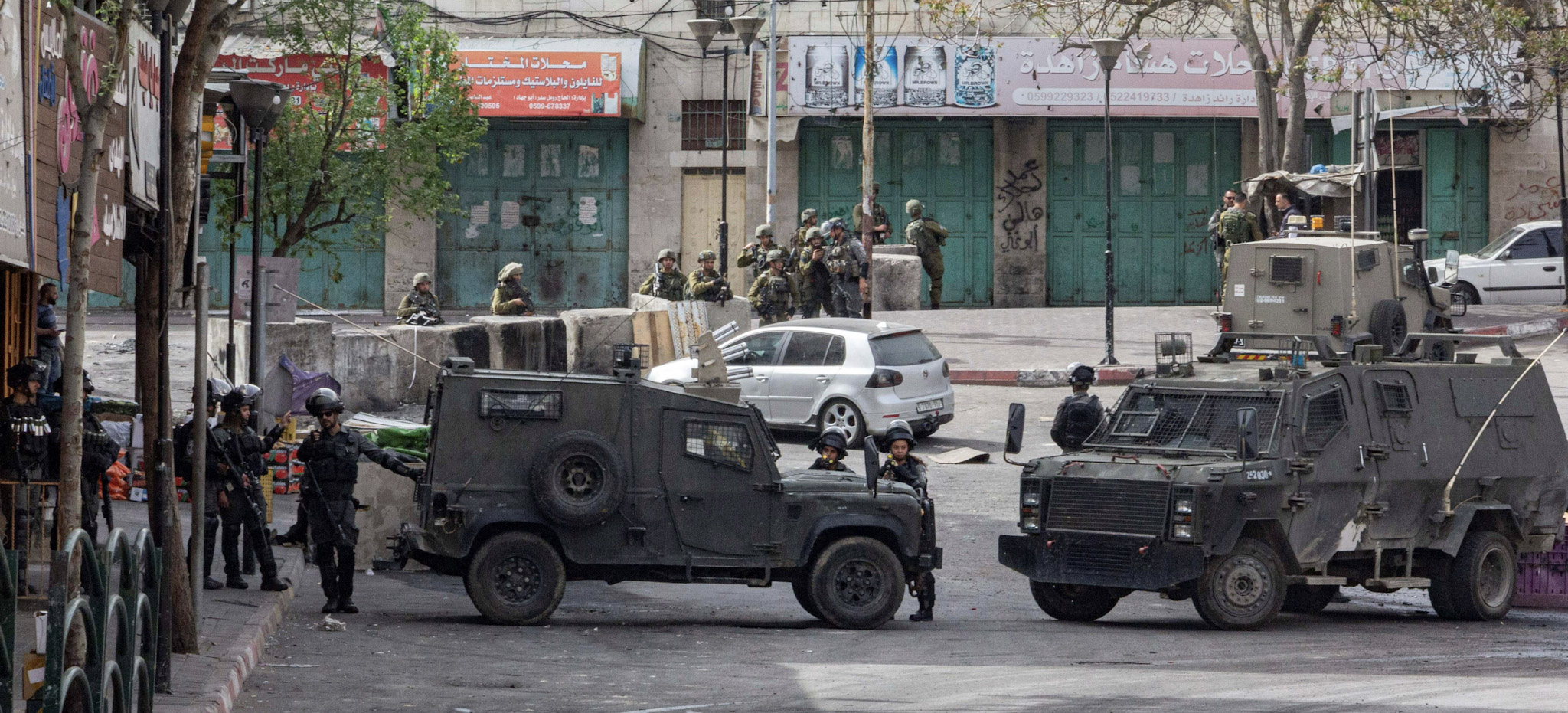
Israeli military seal off road
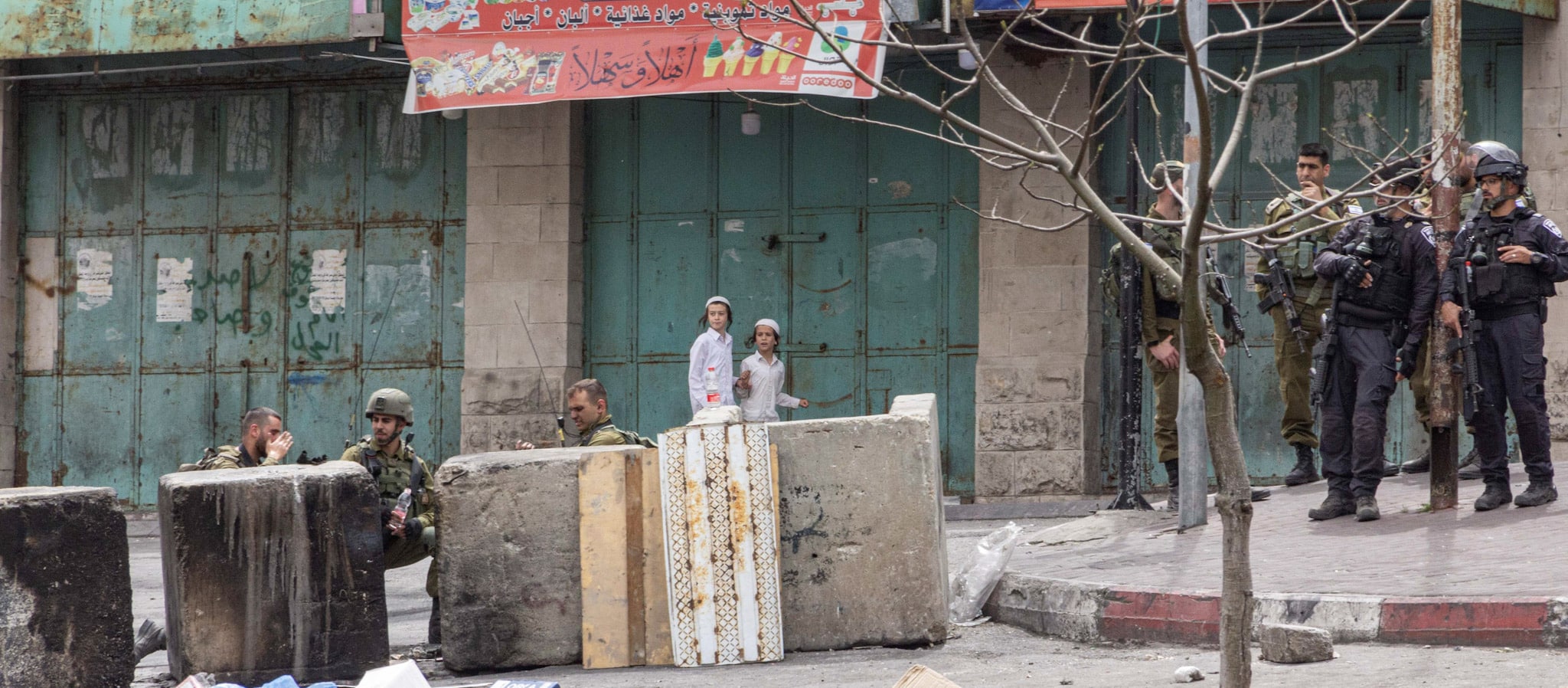
Jewish children on their way to caves via sealed off route
On Jewish holidays checkpoints may be closed entirely. In 2022, with Ramadan and Passover coinciding, the main checkpoint to the mosque was closed completely for two days.
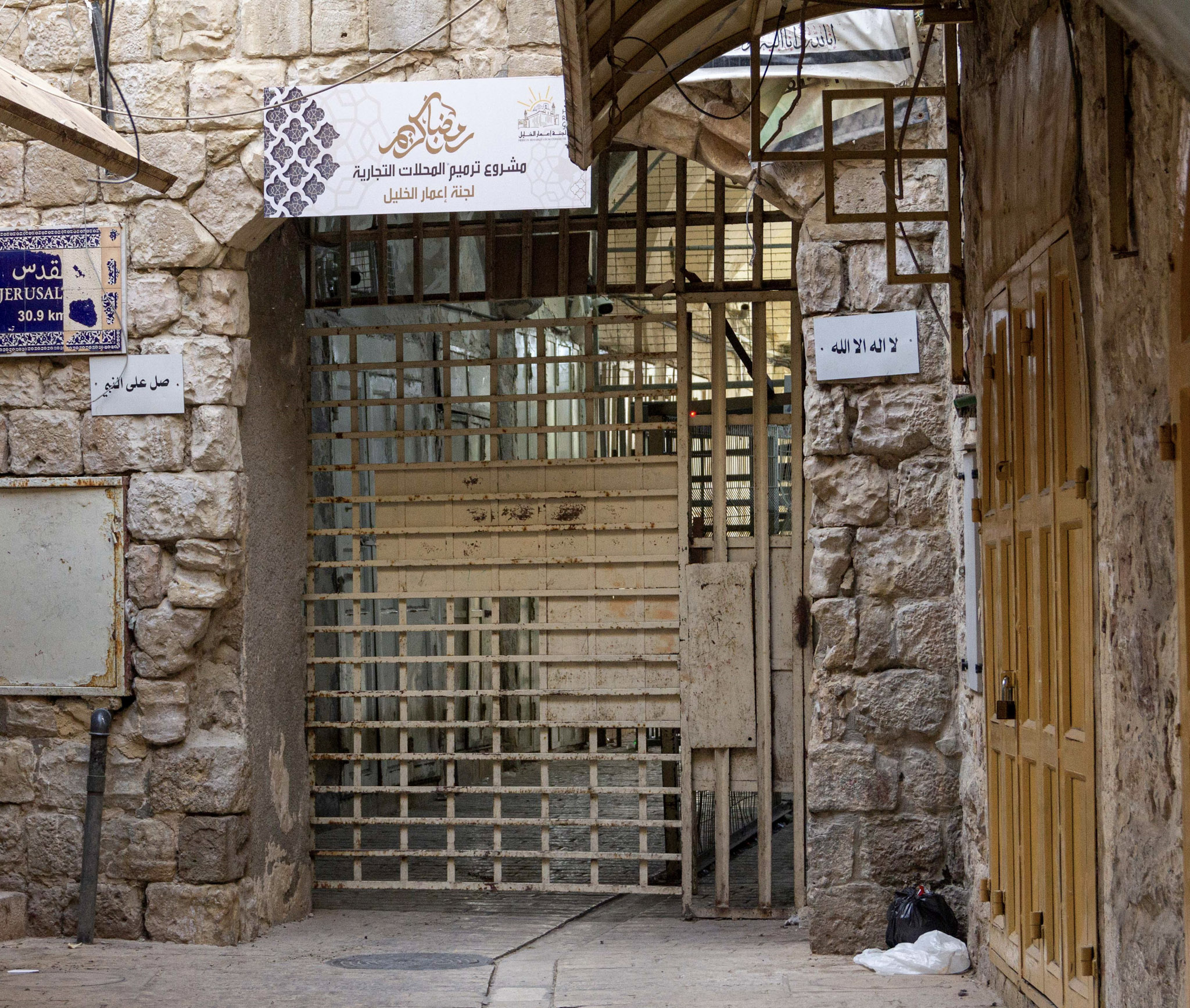
Main access checkpoint for Ibrahimi mosque – closed for two days during Passover/Ramadan
Access to work/livelihood
As well as some people needing to cross checkpoints to get to their workplace in H2, many people in the Hebron area work in Israel, so need to cross one of the border checkpoints to get to work. At Taquimiya checkpoint typically people arrive early in the morning (from 4am) to ensure that they can cross in time for work. More than 10,000 people cross each day: some are denied entry. Reasons might include forgetting their permit, the permit having expired, the magnetic strip not working. According to Machsom Watch, an Israeli human rights organisation that monitor the checkpoints, others are denied entry on ‘no justifiable basis’. Being denied entry may then result in loss of a days pay and potentially loss of a job.
‘Note importantly, that the permit regime and the prevention of entry regime… clashes with the principles of international law. The violation of human rights is disproportional and constitutes collective punishment of the entire Palestinian population.’
Israeli human rights organisation, Machsom Watch
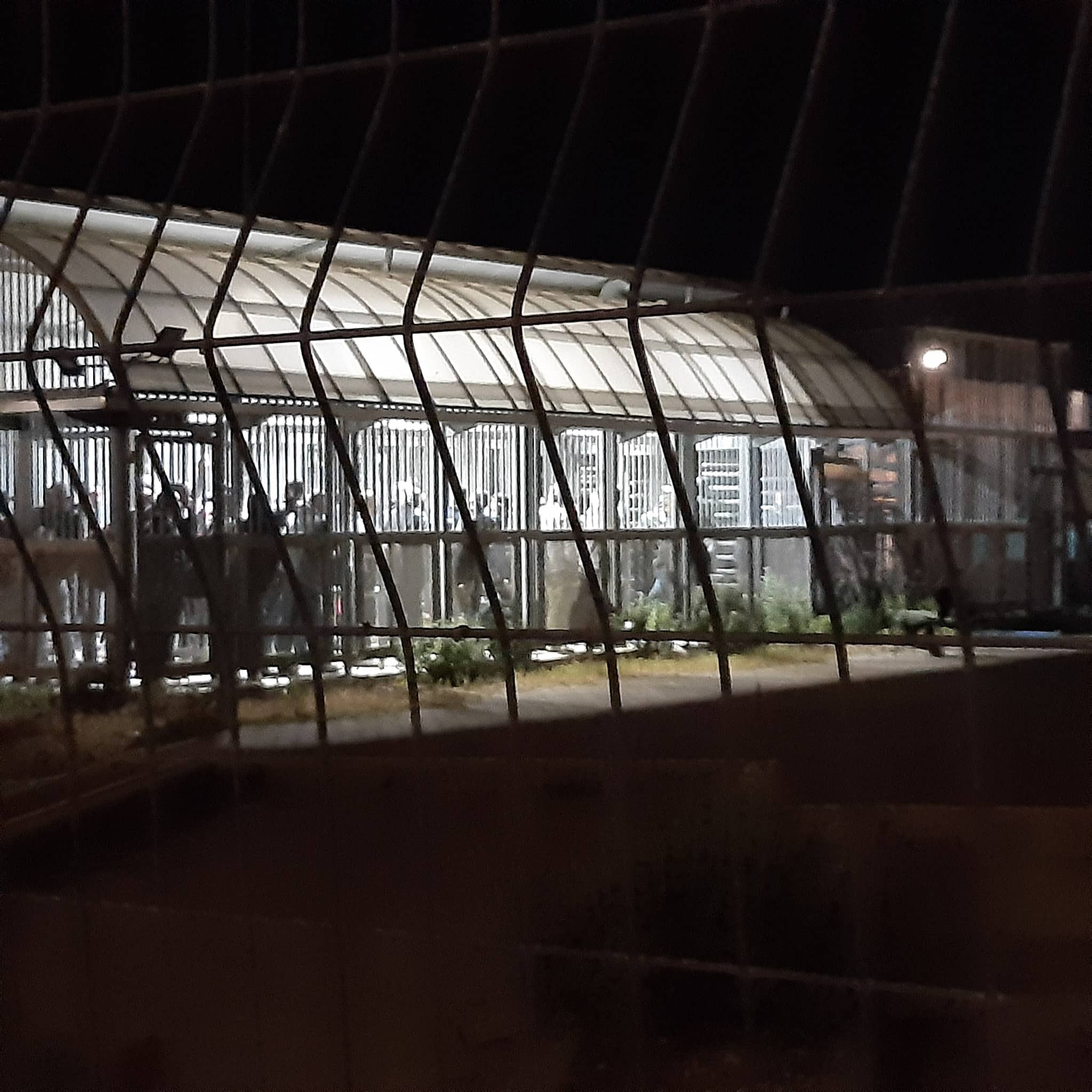
Workers queuing at Tarqumiya checkpoint at 4am
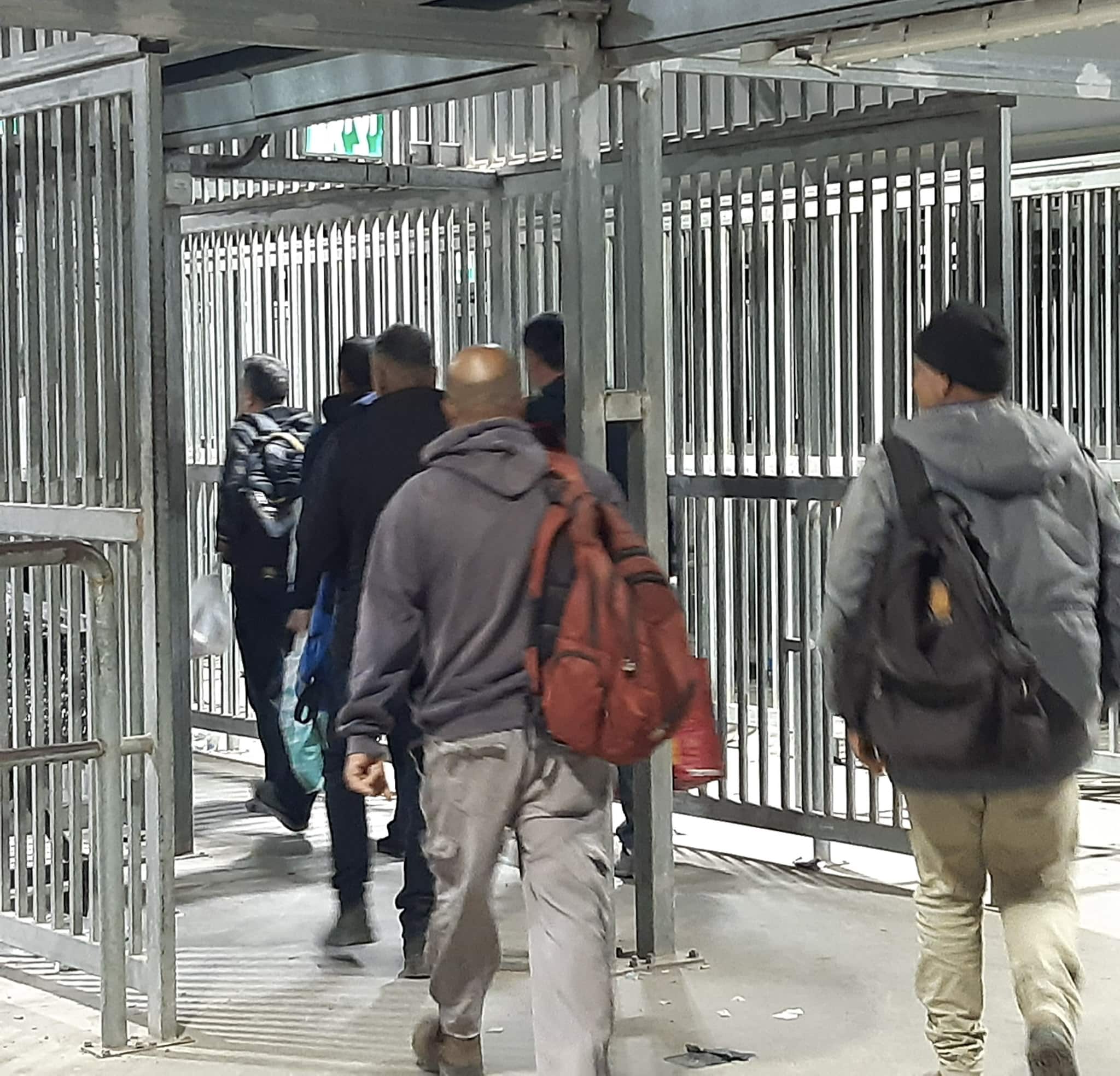
Workers entering Tarquimia checkpoint to get to work in Israel
Daily life at the checkpoint
Living and/or working in the vicinity of the checkpoints can be particularly challenging especially when there is stone-throwing, tear gas and sound grenades. This results in people moving away from these areas.
Many of the properties near checkpoint 56 are empty as people and businesses have moved away. In one house the only windows look out over the checkpoint. Because clashes commonly take place in the vicinity the family have installed wire mesh over the windows to protect them from stones.
Family members and friends are reluctant to visit because of the location of the house and have tried to persuade the family to leave.
Hamed (not his real name) lives and works near Abu Rish checkpoint, also a location where clashes are common. The tear gas has a significant impact on his father’s health. He told us: ‘My father is very old. When the tear gas comes he collapses.’
‘The extreme restrictions on Palestinian movement together with violence by settlers and security forces have made life intolerable for Palestinians, leading to a mass exodus and the economic ruin of the downtown area.’
Israeli human rights organisation, B’Tselem
Israeli human rights organisation, Machsom Watch, have described Hebron as a ‘city turned into a jail.’
Take action!
-
Share this photoblog on social media and show your friends and family what life is like for Palestinians in Hebron.
-
Watch and share the powerful short film by the New York Times, Mission Hebron, to hear directly from Israeli soldiers who have served in Hebron.
-
Part of a church or other faith community? Send them the Investing for Peace campaign postcard and ensure they are not investing in funds which profit from the occupation.

